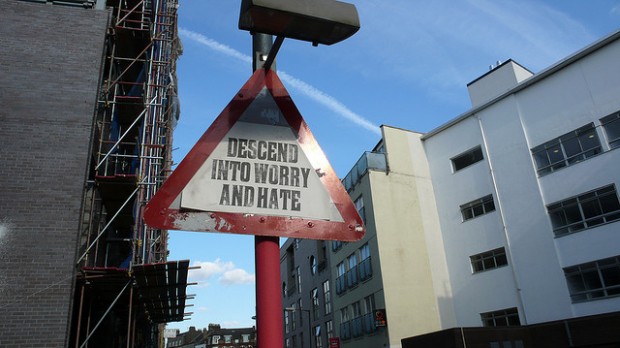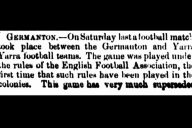The new FIFA rankings are out and, as usual, it’s only a slightly more reliable measure of quality than the top 40 music charts.
When I started writing this piece Australia was ranked 84th. Two days or so later and the Socceroos have now dropped to 94th.
The recent run of poor results by the Socceroos had already led to the almost ceremonial round of handwringing and recriminations about the state of the national team that we’ve been almost permanently engaged in since that brief, shining moment of promise when we reached the Asian Cup final in 2011.
We lost 1-0 to Japan, who have also been through their own turmoil in the past few years, but are still ranked a respectable 52nd. The team we beat 6-0 in the 2011 Asian Cup semi-final, Uzbekistan, are ranked 65th — that’s 29 spots ahead of Australia.
After Australia’s recent 1-0 loss to Qatar in Doha, the doomsday prophets emerged, shaking crooked, wizened fingers ready to deliver Gospel truth like Moses on the Mount, to let us know ‘we’re damned I tells yah, positively rooooned!’
“Quite simply, the Socceroos don’t look good enough, at least in the shape they are in now,” Fairfax scribe Michael Lynch told us.
Ray Gatt’s analysis in The Australian wasn’t quite so damning and he pointed out that it’s still early days in Ange Postecoglou’s restoration project:
The groans of disappointment on social media yesterday suggest Australian fans are starting to lose their patience. They want to see results and losing to Qatar, the 96th-ranked team in the world, has done little to inspire confidence. However, the criticism of Postecoglou is unwarranted at this stage. Let’s not forget, he inherited a largely ageing team at the end of an era. One that had lost direction and confidence.
Well, as Gatt pointed out, Qatar were ranked 96th; they’re now ranked equal 88th along with Estonia, China and Morocco.
From our vantage point in 94th spot we can look longingly to Haiti in 93rd and look down our noses at Rwanda in 95th.
This is, at present, our cohort. This is our neighbourhood if the FIFA rankings are to be believed. And sure you can argue the rankings throw up some wonky estimations of a national team’s worth (in November 2010 we looked down our noses to now 7th ranked France from the dizzying heights of 20th spot), but in terms of a general survey of where you are in the broader picture, it has its uses.
Maybe though a more worrying measure of our worth as a football nation than the FIFA rankings is to take a look at the squad lists of the clubs taking part in the European Champions League. Most football fans and pundits would agree that the Champions League is the sport’s pinnacle when it comes to quality.
A perusal of the playing lists for these clubs provides a brutal free market assessment of which nations are producing the goods in terms of player quality and depth. Australia has one player, Borussia Dortmund’s reserve keeper Mitchell Langerak, in among the 32 clubs, each with a playing list of about 30 players. That’s about 960 players. In Dortmund’s squad, you’ll also find Japanese player Shinji Kagawa and Pierre-Emerick Aubameyang of Gabon, a country that is ranked 67th by FIFA.
Simon Kuper and Stefan Szymanski’s book Soccernomics has the tantalising subheader: Why England loses, Why Germany and Brazil win, and why the US, Japan, Australia, Turkey — and even Iraq — are destined to become the kings of the world’s most popular sport. There might have been just a touch of marketing hyperbole in all that and it certainly appealed to the air of manifest destiny some attach to the Australian football story, complete with patron saint-prophet Johnny Warren’s I told you so proclamation acting as a rallying cry.
Driven by Moneyball methodology, the book has a compelling hypothesis about the role demographics and economics play in the shaping of nations as football powers. There’s an almost determinist air of zeal about the way the authors crunch the stats to show that with economic and population might comes inevitable football success: money can buy culture.
It’s instructive to read what they say about the experience of the Socceroos under Guus Hiddink in 2006 (bear in mind the book was first published in 2009):
Just as he had with the Koreans, Hiddink was turning the Australians into Dutch soccer players. That meant giving them the intellectual discipline needed for the World Cup … It was striking how quickly the Socceroos learned core European soccer. Once again, ‘culture’ seemed to be no obstacle.
Except it is an obstacle. Ignoring the fact it wasn’t Hiddink who taught the likes of Viduka, Kewell and Cahill “core European soccer”, he tactically refined what was there, there’s a simple-minded dismissal at play here about the role of culture, especially playing culture, in football.
Culture is what so many true believers have been banging on about in Australian football for nigh on 40 years. Culture is not taught in a few weeks by imported Dutch super coaches. Culture is when eight-year-olds learn how to kick the ball properly using a variety of techniques. Then through many steps of accumulated learning of technique and craft, culture is when A-League teams consistently play passages of one-touch football because it is second nature for the players to know how to pass and receive the ball at speed and on the move.
Maybe culture can be bought. Like buying yourself into a better neighbourhood, moving up the FIFA rankings until you can afford to thumb your nose at the riffraff until they mug you in a World Cup tie.
But we’re in no position anymore to pretend we’re more entitled than Qatar, Haiti or Rwanda to take our place at the big boys’ table of international football. We’re in a pretty rough neighbourhood now, and barring a magic genie coming along to grant us a wish or three, we might have to start thinking hard about how we become a successful football nation and what part culture plays in that.
Photo: Bryan Kennedy/Flickr
















